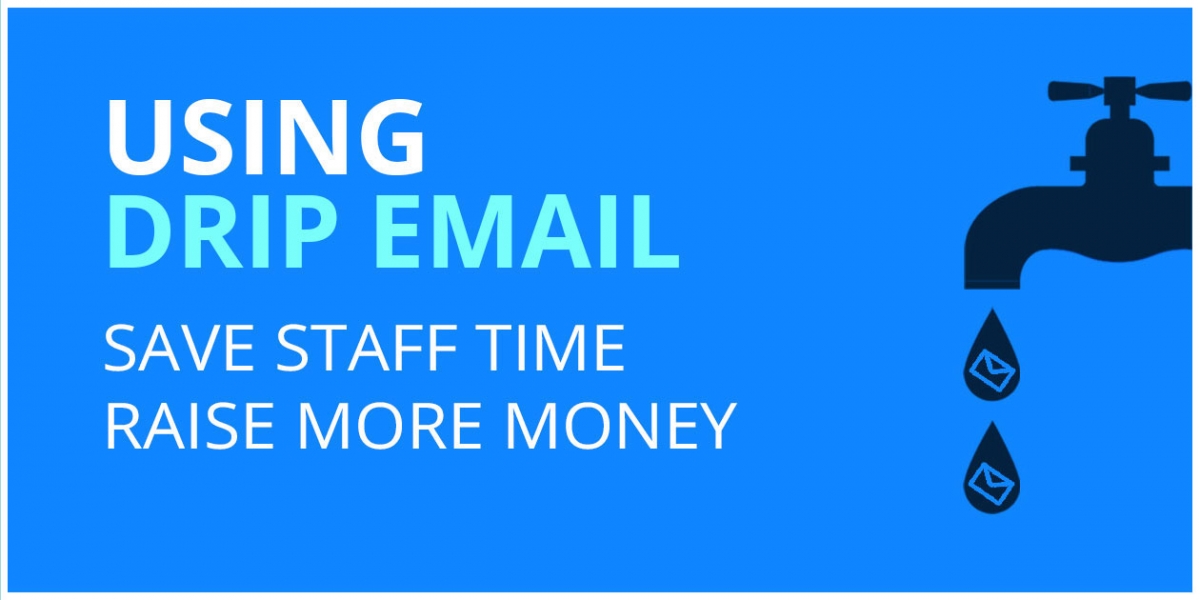Donor retention is a critical part of growing your nonprofit’s mission. Using a drip email welcome series is a great way to start a relationship with new constituents that hopefully lead to a long-term relationship.
According to research, donor retention is declining across the nonprofit sector. So, starting off on the right foot with new donors is critical to building that long-term engagement.
New donor welcome series have also become easier with the advent of drip email marketing, also known as marketing automation. Email providers like MailChimp, ConstantContact, ActiveCampaign, Pardot and more are readily available to nonprofits, and make setting up a welcome series quick and easy.
What is a Drip Email Campaign?
Drip email campaigns are an automated way to send out emails to a user based on around a schedule and a behavior that triggers the series.
For the purpose of this post, the example is a new donor to your organization. When they first give a gift it would trigger the email welcome series.
An email welcome series is typically 3 to 4 emails sent about a week apart. The goal is to reinforce the decision that the donor made to support your mission. Then lead them down a pathway towards further engagement.
It’s really important to get your messaging in a welcome series correct. To develop better messaging, we recommend using stakeholder interviews and surveys.
Do NOT ask them for more money. This will give the impression that’s all you care about.
Why is Marketing Automation Critical to Your Drip Email Campaign?
As we all know, nonprofit staff are constantly wearing a million different hats. Because marketing automation is automated, it reduces the staff time needed to manually engage constituents.
Simply put, it builds capacity at your organization, while also building relationships.
Sounds good, right?

Example Welcome Series
Your email drip campaign should always be personalized. So, make sure that you are using merged data to address the new donor personally.
As we mentioned above, the campaign should be 3 to 4 emails long, and you can send each email about a week a part.
Email #1: Thank You
There’s no better way to start a relationship than thanking someone. Immediately after a donation is made, send a thank you note to the donor.
The note should reinforce their decision to donate to your organization. Talk about the values or your organization, and how you are making an impact.
This is also a good time to talk about your organizational goals. Demonstrate that you have a big vision and a plan to get there.
Think about more than just a written email. Try a video message from your executive director, or a video that captures your organization’s mission and vision.
Email #2: Impact Story
Storytelling is a great way to show organizational impact.
This email could include a compelling image from the impact story, a teaser about the story, and a quote.
Additional ideas:
- Use video to tell a story
- Use infographics to illustrate the problem your mission solves and the impact your work has on it
Email #3: Small Engagement Ask
At this point, the new donor should feel connected to your mission and values.
It’s time to make the first ask. Not money, but offer them a way to engage with you further. For example:
- Sign-up for your newsletter
- Follow you on social
- Listen to a podcast or recorded webinar
- Read a publication or resource
Don’t forget to be specific about the value this step will bring to them. Why is the newsletter valuable to them. For example, first to receive volunteer opportunities, or access to publications/resources.
Email #4: Add Value
Relationships should be a two-way street. This is no different with constituents.
Send an email about resources or publications that could be helpful to the donor. Perhaps offer special access to a volunteer opportunity.
The bottom line is, help the donor realize that your organization can add value to their lives and experience. Do something nice for them.
Email #5: Larger Engagement Ask (Not Money!)
Take the next step and ask the donor to enage in a larger capacity. Some ideas:
- Site tour – give them a guided tour
- Volunteer opportunity – ask them to volunteer at a certain date
- Join an event
Take Your Drip Campaign Further
Here are some tips to help to improve your drip campaigns:
- A/B test your email content – testing your emails will allow you to tweak the content to get better and better over time. Compare email subject lines, deliver dates/times, actual email content, imagery, etc.
- Use Landing Pages – landing pages help increase conversion rates when you are asking users to take an action. Services like Unbounce, LeadPages and Instapage make this process extremely easy.
- Segment Users by Action/Interest – many marketing automation systems will allow you to track user interests by the types of links they click on. Use this information to further engage the donor based on their interests.
- Link Drip Campaigns – when a donor finishes one drip campaign, start them through another automation sequence based on the behaviors that the donor has taken during the welcome series.

